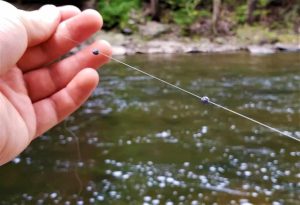When it comes to fine-tuning fishing rigs, split shot weights play a crucial role. These small, versatile pieces of tackle allow anglers to adjust their setup for a variety of fishing conditions, making them a go-to item for many. However, with various types of split shot available, selecting the right one for the fishing environment can be a game-changer.
What Are Split Shots and Why Use Them?
Split shot are small, round weights, typically made from lead or non-toxic materials like tin or tungsten, that are pinched onto the fishing line. They are used to weigh down the bait or lure, helping it sink to the desired depth or maintain a specific position in the water. Split shot are easy to apply and adjust, making them ideal for refining presentations in both freshwater and saltwater settings.
One of the primary uses of split shot is to control the depth of the bait, especially when targeting fish that feed at various levels in the water column. Anglers can add or remove these weights as needed, providing flexibility in dynamic fishing environments.

Types of Split Shot and Their Uses
The type of split shot chosen should depend on the target species, fishing location, and water conditions. The most common types include:
- Round Split Shot – These are the standard variety, ideal for general-purpose fishing. Round split shot can be added in increments to achieve the desired sinking rate for baits or lures.
- Removable Split Shot – These come with small wings on the side, allowing easy removal or repositioning on the line. They are excellent for anglers who frequently adjust their rig based on changing water conditions.
- Tungsten Split Shot – Known for their high density, tungsten split shot sink faster than lead or tin. These are perfect for fishing in fast-moving water or deeper areas where rapid descent is required. While more expensive, tungsten is favored in environments where environmental concerns regarding lead are prevalent.
- Non-Toxic Split Shot – With increasing restrictions on lead usage, many anglers are turning to non-toxic alternatives like tin or steel. These are lighter than lead, so they may require more split shot to achieve the same effect, but they offer an environmentally friendly option for conscientious anglers.
Choosing Split Shot Based on Conditions
When fishing in rivers or fast-moving streams, heavier split shot, like tungsten or larger round options, can help keep the bait from being swept away by the current. For lakes and ponds where the water is still, lighter weights might be more effective in creating a natural presentation.
The water’s depth is another critical factor. In deep waters, anglers should consider using a series of split shot to gradually sink the bait, giving it a more lifelike fall through the water column. Conversely, for shallow areas, a single, lighter split shot might be sufficient.
Proper Placement of Split Shot
Placement of split shot can affect the behavior of the bait or lure. For bottom-feeding fish like catfish or carp, split shot should be placed closer to the hook to keep the bait on or near the bottom. When fishing for suspended species like crappie or bass, positioning split shot further up the line allows the bait to drift more naturally at mid-depth.
Adjusting for Seasonal Trends
As water temperatures and fish behaviors change with the seasons, adjusting the amount and type of split shot used can lead to better results. In the colder months, when fish are more lethargic and tend to stay near the bottom, heavier split shot may be needed to get the bait to the fish. In contrast, during warmer months, lighter split shot can create a more subtle presentation, which can be appealing to fish that are actively feeding closer to the surface.
Maximizing Efficiency with Split Shot
For anglers looking to maximize efficiency, keeping a variety of split shot on hand allows for quick adjustments. This flexibility can be especially useful during fishing tournaments or when time is of the essence. By understanding how different types of split shot perform under various conditions, anglers can refine their approach and improve catch rates.
In conclusion, choosing the right kind of split shot is an essential skill for any angler. With the right selection, these small but mighty pieces of tackle can significantly enhance fishing success, ensuring baits and lures are presented effectively to the target species. Whether fishing in fast-moving streams or calm lakes, having the proper split shot setup is a key factor in any successful outing.
Image: TheFlyCrate





